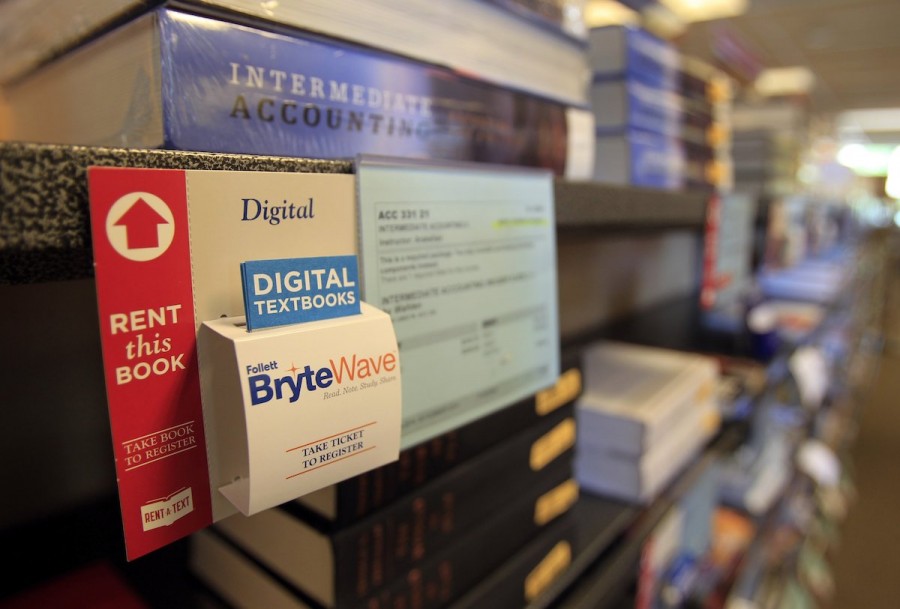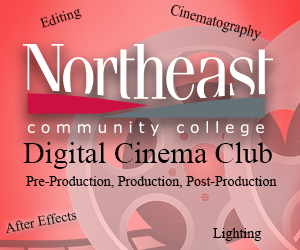Colleges Look For Ways To Cut Cost Of Textbooks
Students can rent, buy used, buy new or buy a digital copy of their textbooks at the Cal State Dominguez Hills bookstore in Carson, Calif., which is trying to provide more information to students about book costs and alternatives. (Allen J. Schaben/Los Angeles Times/MCT)
August 19, 2014
MCT NEWSFEATURES (EDITORS: Resending for all needing.)
(PHOTOS) (HAS TRIMS)
It’s the middle of summer and while many other students are hanging out at the beach or preoccupied with jobs, Elizabeth Rodriguez is emailing instructors for information about the books she will need as a junior this fall at California State University, Dominguez Hills.
Her method is to find the books early and cheaply through online sites such as Amazon.com and EBay rather than paying full price for texts that can cost upward of $300 at the school bookstore.
The strategy is much simpler for Cal State, San Marcos, senior Jeffrey “J. J.” Gutowski. He’s stopped buying books altogether, unless he is convinced he needs them to pass a course, and then he will share a classmate’s text or rent one online.
Such pushbacks to the soaring costs of textbooks have not gone unnoticed by officials at California State University, which began a new effort recently to offer more affordable options such as digital textbooks, rentals, buy-back programs and, most significantly, incentives for faculty to redesign courses to use low-cost or no-cost alternatives to textbooks.
The 23-campus Cal State system is also leading a joint endeavor with the University of California and community colleges to develop an online library of free textbooks in 50 popular courses.
As colleges look to reduce the overall cost of education, many are centering efforts on course materials, which, according to Cal State officials, sets an average student back more than $1,000 annually.
That’s an 18 percent addition to an undergraduate’s annual $5,472 tuition. According to the UC website, students pay about $1,500 for textbooks and supplies, adding about 11 percent to the $13,200 in overall tuition and fees. And at California community colleges, many students can pay more for textbooks than for course fees, officials said.
A national student survey released in January by the U.S. Public Interest Research Group Foundation found that 65 percent of respondents said they didn’t purchase a textbook because it was too expensive — even though most feared that their grades would suffer.
Making course materials more affordable has become key to increasing student success, said Gerry Hanley, Cal State’s assistant vice chancellor for academic technology services.
“My goal is to cut costs by 50 percent for all students, said Hanley, who oversees the initiative that helps faculty find low-cost teaching materials. “My real desire is to make materials free for everyone, but I recognize that the creation of content and publication is real work.”
Students saved an estimated $30 million total in 2013-14 in Cal State bookstores by using digital textbooks, renting print copies, buying used ones and using other sources, Hanley said.
A student looking for the intermediate accounting textbook at the Dominguez Hills bookstore, for example, would find a new copy for $318.75 and a used one for $239.25. Renting a new copy would cost $191.25 and a used copy $153, while a digital version of the text costs $59.49. Last spring, about 50,000 digital textbook titles were available to Cal State students and faculty systemwide.
Despite the growth of digital formats, the trend is for students to rent hardbacks, campus store manager Brian Lacey said.
Faculty members are also collaborating with libraries and bookstores to offer options that can greatly reduce costs. At Dominguez Hills, a spring sociology course on aging offered a free e-book version of the required $104.50 textbook through the campus library.
More than 200 of the campus’ 750-member faculty have revised their courses to offer low-cost or no-cost alternatives to costly textbooks. For M. Keith Claybrook Jr., a lecturer in Africana studies, that means using scanned articles, drawing chapters from full textbooks to create customized readers and using e-books available for free through the campus library. Materials for an introduction to hip hop class taught in the spring retailed for $95.74 but students got them free.
“My role as an educator is to make sure (students) have the tools and resources needed to maximize learning,” Claybrook said. “I don’t want to penalize my students who have financial hardships or limitations that prevent them from getting course materials; I’m not here to make the bookstore or publishing company rich.”
A program at the San Marcos campus offers faculty grants from $500 to $1,500 to those who redesign their course syllabus using “open education” resources or creating their own materials. Natalie Wilson, a lecturer in women’s studies and literature who is a faculty representative for the program, has redesigned two courses and is revising a film studies class to be free.
“The textbook marketplace is broken with the problem being that the people choosing the textbooks aren’t the ones who are actually buying the books,” said Emily Rusch, executive director of the California Public Interest Research Group.
David Anderson, executive director for higher education at the Association of American Publishers, said publishers are doing their part to provide students with more alternatives, including offering more digital content that can rent for 60 percent less than the hardback.
But he cautioned against the use of free online materials that may not provide the quality that faculty are used to, which could shortchange students.
“Forty percent of students who go into a four-year university don’t graduate and 20 percent need some form of remedial education,” Anderson said. “For entering college students that need help, these learning materials are tailor-made to give them that help.”
Cal State’s open library was established under 2013 legislation to rein in skyrocketing education costs. The system received $2 million in grants and state funding and a council of academic appointees is reviewing free online books that can be used in the three higher education systems. The library so far includes texts for courses in chemistry, communications, economics, history and math.
Katie Boggs, a San Marcos senior majoring in business administration, said more of her professors are using older textbook editions and creating their own, cheaper workbooks that reduce costs considerably. But she still sometimes shares books with classmates, and said students need more upfront information about ways to avoid paying full price at the bookstore.
“Some professors have told us you can borrow books at the library, and it’s a nice resource when they’re available but they are few and far between,” said Boggs, 21.
Rodriguez, meanwhile, learned that in her upcoming business law class, professor Charles Thomas is creating a cost-saving soft-bound reader using selected chapters from the full textbook — good news for someone who pays for materials out of her own pocket.
But she employs other efficiencies, such as finding used books that have little highlighting and no torn pages, using Post-it notes rather than writing in the margins, and then selling her copies to other students at a discount.
“I guess I’ve become sort of an expert,” Rodriguez said.
———
©2014 Los Angeles Times
Visit the Los Angeles Times at www.latimes.com
Distributed by MCT Information Services











